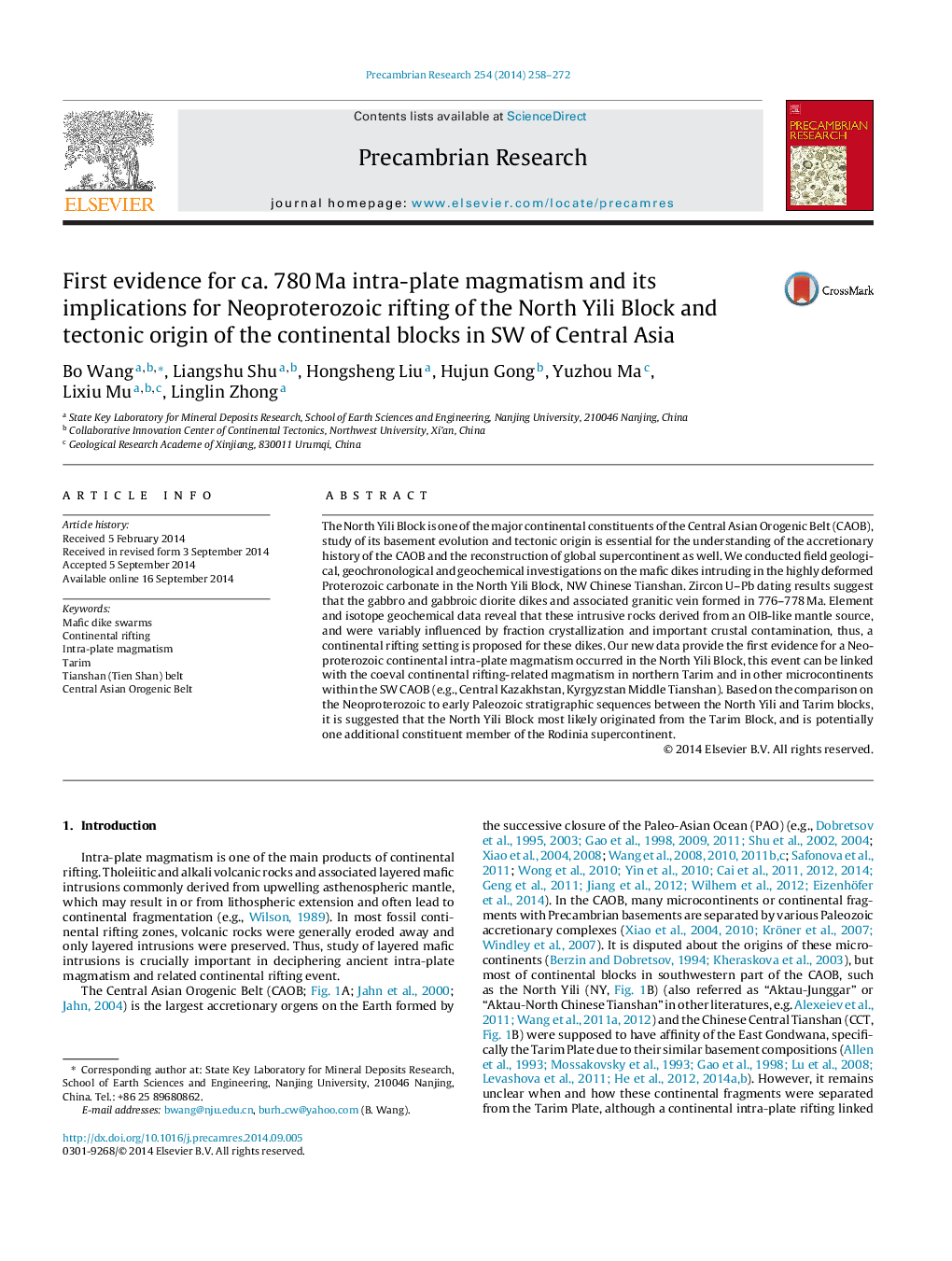| Article ID | Journal | Published Year | Pages | File Type |
|---|---|---|---|---|
| 4722877 | Precambrian Research | 2014 | 15 Pages |
•Mafic-intermediate dikes in North Yili formed at 776–779 Ma.•Geochemical features of gabbro and diorite indicate an OIB-like mantle source.•First evidence for Neoproterozoic intraplate magmatism in North Yili.•The North Yili originated from Tarim, and is likely a new member of Rodinia.
The North Yili Block is one of the major continental constituents of the Central Asian Orogenic Belt (CAOB), study of its basement evolution and tectonic origin is essential for the understanding of the accretionary history of the CAOB and the reconstruction of global supercontinent as well. We conducted field geological, geochronological and geochemical investigations on the mafic dikes intruding in the highly deformed Proterozoic carbonate in the North Yili Block, NW Chinese Tianshan. Zircon U–Pb dating results suggest that the gabbro and gabbroic diorite dikes and associated granitic vein formed in 776–778 Ma. Element and isotope geochemical data reveal that these intrusive rocks derived from an OIB-like mantle source, and were variably influenced by fraction crystallization and important crustal contamination, thus, a continental rifting setting is proposed for these dikes. Our new data provide the first evidence for a Neoproterozoic continental intra-plate magmatism occurred in the North Yili Block, this event can be linked with the coeval continental rifting-related magmatism in northern Tarim and in other microcontinents within the SW CAOB (e.g., Central Kazakhstan, Kyrgyzstan Middle Tianshan). Based on the comparison on the Neoproterozoic to early Paleozoic stratigraphic sequences between the North Yili and Tarim blocks, it is suggested that the North Yili Block most likely originated from the Tarim Block, and is potentially one additional constituent member of the Rodinia supercontinent.
